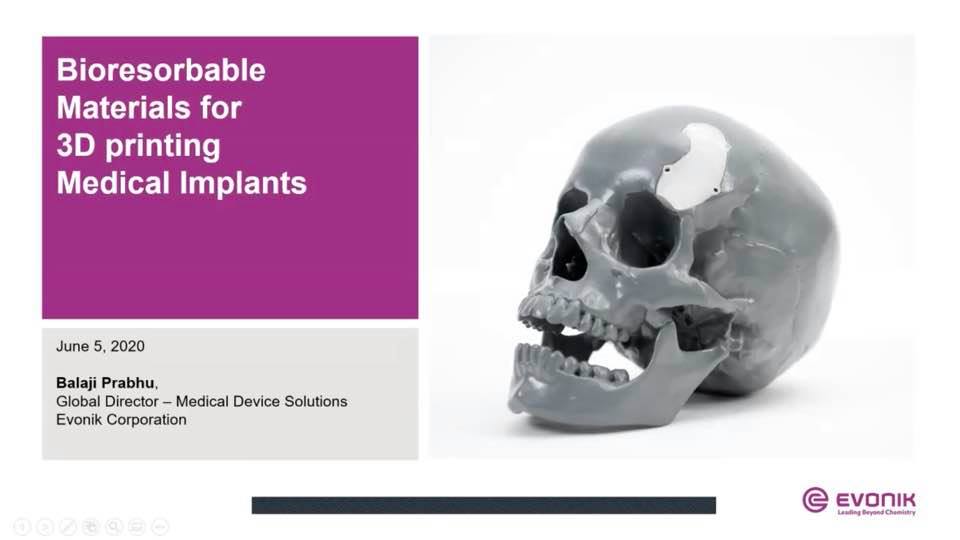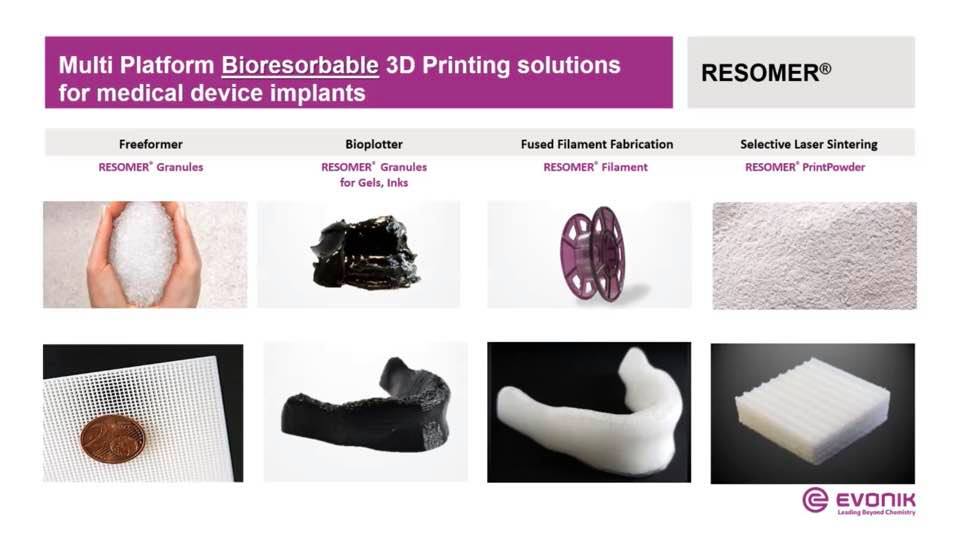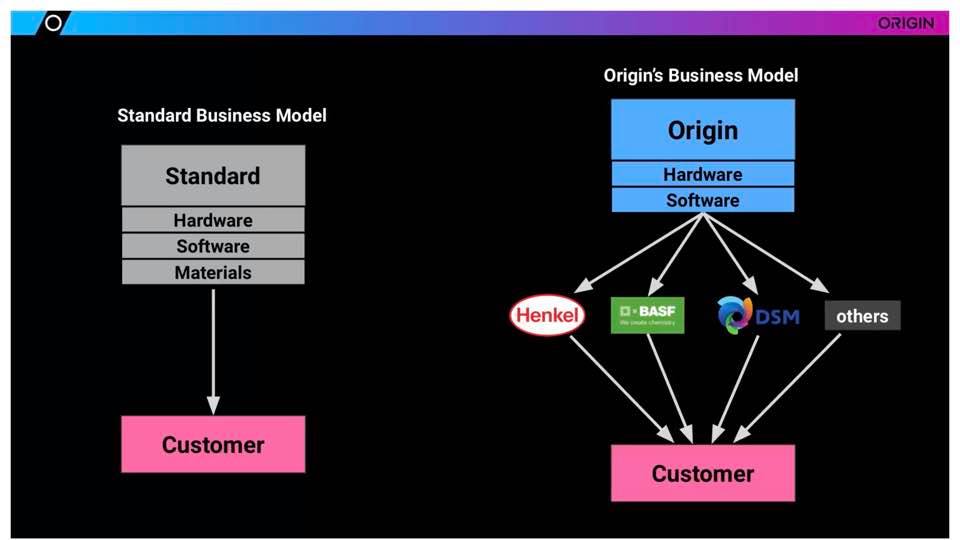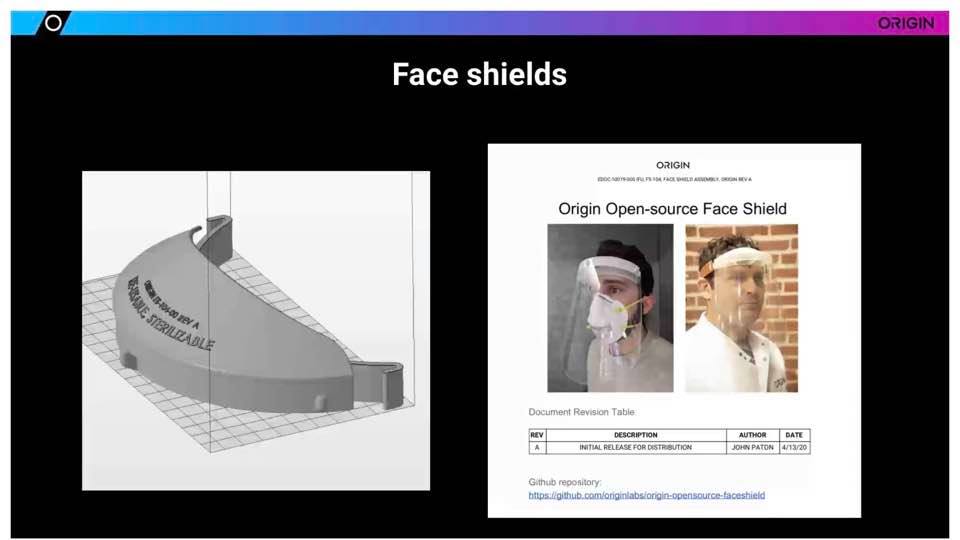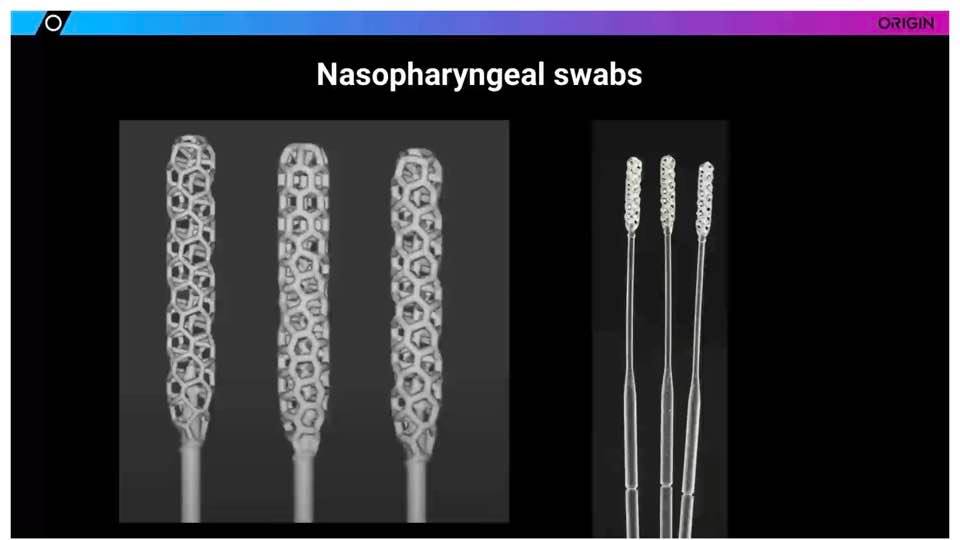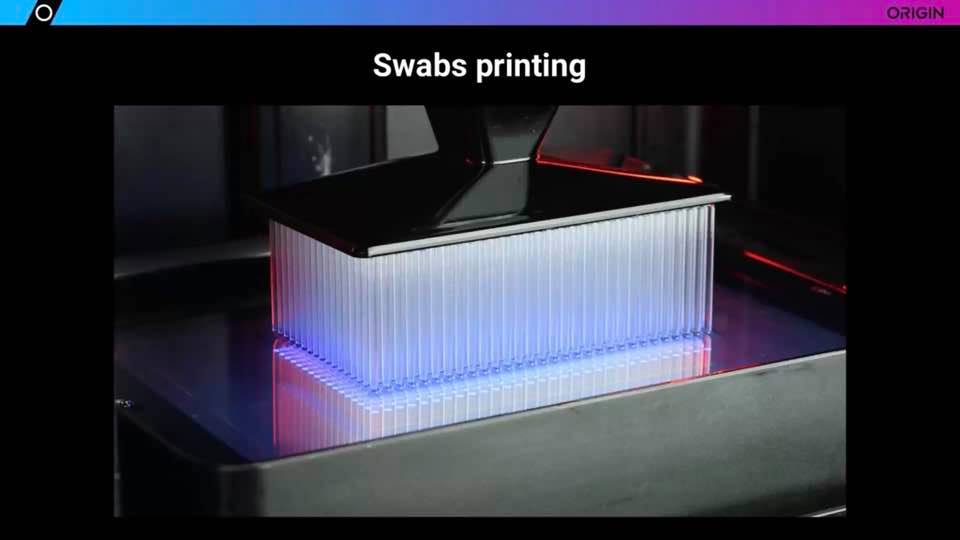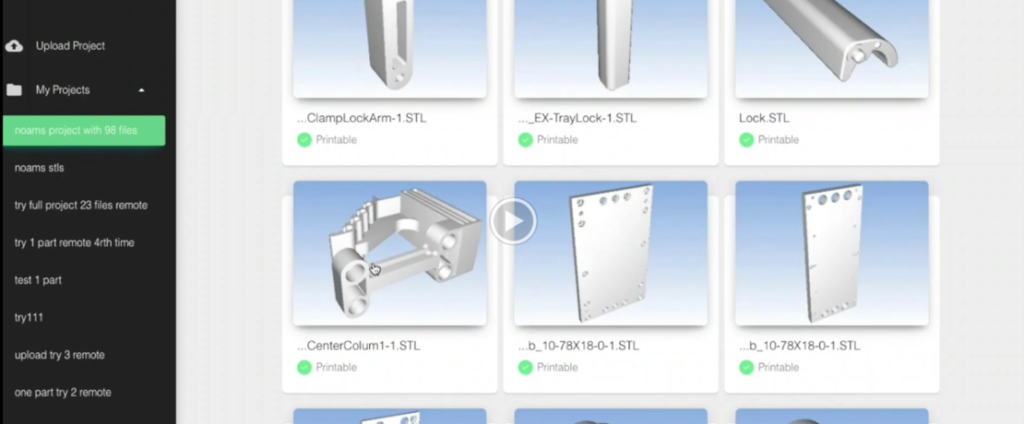Evolve Additive Solutions set for another round of investment funding
3DHEALS 2020 Virtual Medical Summit: 3D-Printed Materials in Healthcare
There were a multitude of sessions and sub-sessions to follow at 3DHEALS 2020 (running from June 5-6), with over 70 speakers and four workshops, covering many topics on complex design, and patient-specific treatment. Here at 3DPrint.com, we have covered many stories on materials, as researchers and manufacturers delve into their uses in other major applications too like automotive, aerospace, construction, and so much more.
At the “Material Science in Healthcare 3D Printing” session, medical applications were discussed in detail by Balaji Prahbu (Director of Strategic Marketing for Medical Device Solutions/Evonik Industries), Steve Kranz (Lab Manager and Senior Scientist at Origin), Sean Dsilva (Medical Marketing Segment Head for 3D Printing Henkel) Adhesive Technologies Division), and Mike Vasquez (Founder and CEO, 3Degrees). Topics covered included the importance of bioresorbable materials, biocompatible materials, those used to create devices and tools during the COVID-19 pandemic, as well as workflow systems designed by materials engineers.
Balaji Prahbu opened the presentation with statistics on osteoporosis, a condition that causes millions of fractures in patients around the world. Currently, Evonik uses a variety of polymers to create materials and implants that assist in treating and healing and reconstructing human bone. While some materials dissolve in the body over time, other types of materials created by Evonik can also be used permanently.
The Germany-based company is also developing other new powders and filaments for patient-specific implants that can be produced in just a few hours and completely suited to the individual needs of patients—evidence of some of the greatest benefits in using 3D printing technology.
Sean Dsilva offered information regarding Henkel’s biocompatible materials, explaining more too about the keys to developing high-quality, high-performance UV resins—all tied together with effective workflow processes. The $20 billion company specializes in adhesives technology, including that for the medical field. Currently, Henkel offers four different levels of biocompatible materials:
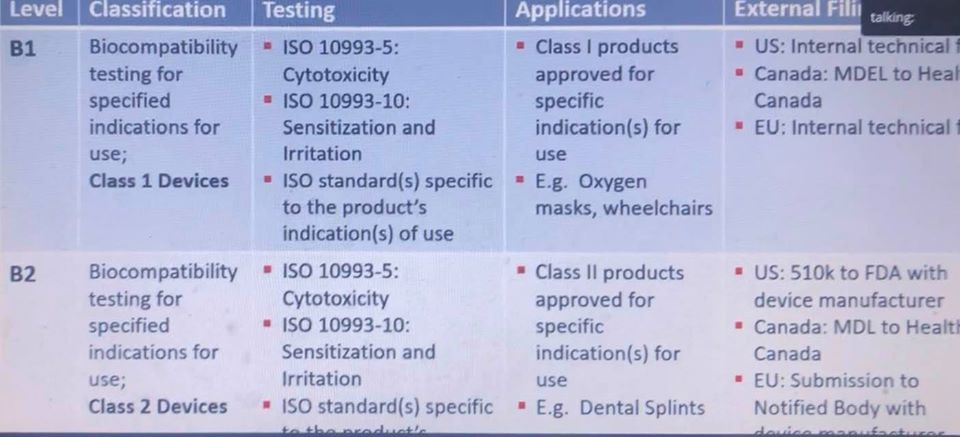
Henkel’s materials can be used for an extremely diverse number of applications, from auditory devices like hearing aids, to prosthetics such as orthotics, bionics, and more. 3D-printed models can also be created, offering a host of benefits like better diagnostics, treatment, and education for patients and their families. Not only that, 3D-printed medical models allow for better training of medical students and allow surgeons to prepare for delicate procedures too. Henkel’s materials are also used to fabricate other industrial components like jigs, fractures, and devices.
Henkel’s materials are also used to fabricate other industrial components like jigs, fractures, and devices.
Steve Kranz definitely offered some of the most interesting information regarding materials, and Origin’s recent transformation from software developer and 3D printer manufacturer to a ‘swab factory’ in response to the coronavirus pandemic. The San Francisco-headquartered company began manufacturing a variety of different 3D-printed swabs for testing purposes, as well as originally designing shields and other personal protection equipment, to include adapting snorkels to be transformed into N-95-style face masks.
Kranz began by explaining, however, that while Origin has—previous to the COVID-19 pandemic—been centered around software and hardware endeavors, they do not develop materials; instead, they rely on experts like Henkel, BASF, DSM and others.
“When COVID-19 hit, things changed for us. It was a lot different, so we had to adapt to survive,” explained Kranz. “We transformed ourselves from a platform that allowed other people to do 3D printing to becoming a factory, to printing parts ourselves.”
 While the Origin team did initially begin creating other types of COVID-19 devices, Kranz stated that they quickly realized they could offer the most important contribution by 3D printing nasopharyngeal swabs. They began collaborating with nTopology, drafting a flexible, effective design.
While the Origin team did initially begin creating other types of COVID-19 devices, Kranz stated that they quickly realized they could offer the most important contribution by 3D printing nasopharyngeal swabs. They began collaborating with nTopology, drafting a flexible, effective design.
While the two companies were able to work together in creating the actual swab, there were numerous obstacles. Some supplies were difficult to attain, such as isopropyl alcohol, gloves, and paper products. They were also challenged in scaling up with more inventory and other resources, dealing with waste, and hiring additional staff to work a lot of long, and “sometimes crazy” hours.
“That’s been Origin’s journey for the past couple of months. It has been very intense, challenging, strange at some times, but also really rewarding and I feel like we have learned a lot. We’ve kind of put ourselves right in the fire in terms of testing out our own production, our own capabilities, and we have learned a lot that is going to help improve our own printers in the future,” said Kranz.
Mike Vasquez opened by explaining that, as a materials engineer, he realizes that additive manufacturing is “fundamentally driven by materials, but it is complicated.” This is due to a lack of accessibility in many cases, an “opaque and often confusing” supply landscape, and limited standards. Material properties may be an issue as well, as they often do not match up with what users are expecting or needing for specific projects.
Because there can be so many challenges—and so much data—involved with creating a 3D-printed part, the 3Degrees team developed the TRACE process for 3D printing workflow management. In creating TRACE, they spoke with over 50 additive manufacturing users, auditors, manufacturers, and standards organizations. The workflow management tool, complete with comprehensive analytics is meant to be customized for different projects.
During the fabrication of 3D-printed medical devices, TRACE can be used to keep track of variables like data inputs, specifications for materials and machine processes, post-processing, and inspections.
Although originally set for ‘the heart of San Francisco’ as a venue, this year’s 3DHEALS Global Healthcare 3D printing conference became a virtual—and inspiring—event. Focusing on the continued impacts to the field of medicine, rather than cancel the annual event due to the COVID-19 restrictions, founder and CEO, Dr. Jenny Chen, committed to an online format, and along with seeing every speaker conform to the changes, she was even able to able 25 percent more in programming.
What do you think of this news? Let us know your thoughts! Join the discussion of this and other 3D printing topics at 3DPrintBoard.com.
[Source / Images: 3DHeals 2020 – from the ‘Material Science in Healthcare 3D Printing’ session)
The post 3DHEALS 2020 Virtual Medical Summit: 3D-Printed Materials in Healthcare appeared first on 3DPrint.com | The Voice of 3D Printing / Additive Manufacturing.
Evonik launches new PEEK filament suitable for 3D printing medical implants
Evonik Launches FDM PEEK Filament for Implants
PEEK polyether ether ketone is a high-performance thermoplastic with high continuous service temperatures, strength, and low flame smoke and toxicity. Due to this, it is an oft sought material by engineers in applications such as automotive under the hood parts or aerospace parts. But, PEEK is considered to be a wonder material by many not just because it meets a lot of high tech engineering requirements. One can also use PEEK in the body for implants. Several spinal screws, suture anchors, orthopedic implants, and other long term in the body implant products have come to the market recently and in things as diverse as CMF and spine, PEEK is in high demand.

Generally, PEEK implants are made through CNC or if they are printed they are made with SLS (powder bed fusion, sintering). SLS is a tried and true technology that has won approvals for surgical guides and implants. SLS’s high productivity, reliability, and predictability make it a good technology to manufacture things with, especially if they are small and require precision. SLS PEEK powders are expensive however. With SLS a laser, sinters some lose polymer powder on a bed of spread out powder. A new layer is then spread out and the process repeats itself. Unsintered powder acts as a support material and once a big block or cake has been built this is removed from the printer and parts are sieved out and brushed out to remove the loose powder. This remaining powder can then to a certain extent be mixed in with new virgin powder and used again. The recycling rate depends on the powder and the build.
Essentially, if a printer uses a metric tonne of powder a month we end up recycling a third per build and ultimately end up throwing away half a tonne of powder for every 500 Kg’s of built parts. Nota Bene: this is just a general example meant to make people understand the economics of SLS a bit better, with different materials and parts, spot, spacing etc. you’ll get different results. This is still way more efficient than cutting away material for CNC for example, but is quite a waste. If you’re paying $100 a kilo for PA, then this is quite expensive on a monthly basis. And this is for a medium machine working at full production. $50,000 per machine per month, ouch. Imagine you’ve got ten or more.
But, PEEK powder is way way more expensive than that. You’ll be paying five to nine times more per Kilo for PEEK depending on the certification. And it gets worse, because the recycling rate of PEEK powder in SLS machines is effectively 0. We toss out all of it. All of it. Everything that is not a built part is thrown away. So depending on the utilization, specific grade, and machine; you’re tossing out a pair of Ferrari’s per month in powder, per machine. Imagine you’re an entrepreneur with your own service bureau and you walk by some bins every day with 4 911’s worth of powder in them, that you will then toss out that day, that’s got to hurt.
This explains the rationale for Evonik’s launch today of a PEEK Filament for implants. 3D4Makers, 3DXtech, Appium, and other firms have offered PEEK filament for a number of years now. Solvay has a healthcare grade PEEK filament that you can buy as well which is ISO 10993 and suitable for limited contact applications for 24 hours and less. PEEK leader Victrex has sold medical PEEK for implantology to a select few also. Alternative materials such as PEKK from Arkema are available but often not with the certifications and approvals to use long term in the body. Now Evonik has an FDM grade suitable for implants specifically.
Polymer companies are reticent to allow for the use of polymers in the body long term because of the suitability of the material for that purpose and also legal liability. DowCorning a huge joint venture went bankrupt over liability related to breast implants that “never represented more than 1 percent of our business” and yet forced the company to set aside $2.35 billion for claimants. Many polymer firms, therefore, consider possible medical implant polymer revenue not sufficient for a possible headshot for their firm.
In this case, Evonik has done its homework on its ASTM F2026 compliant PEEK filament. The business case is clear, with FDM you print only the material that you use (plus extra possible support). This means that you will end up using a lot less material per part than if you fill a full SLS machine. Especially with larger implants, FDM does have an advantage in time in the machine and time to part as well. Besides Kumovis and Vshaper, there has been little development of medical part-specific high-temperature printers for FDM. I think that this can be a fantastically profitable niche that would be difficult from which to dislodge a reliable supplier from. Evonik’s launch of this FDM material can serve as an impetus for the development of more medially capable high-temperature FDM printers that one would need in order to use the filament.
With a surgical implant PEEK material the VESTAKEEP i4 3DF, 1.75 mm, on 250 or 500 gram spools is based on VESTAKEEP i4 G with good “biocompatibility, biostability, x-ray transparency, and easy handling.” X-Ray transparency is a great advantage of polymer medical implants since it allows doctors to check if the implant is placed correctly after implantation and lets them do CT scans especially those with contrast die, after or even during implantation or scans which can let them adequately see bone or tissue healing progress. In CT’s and MRI’s metal implants cause artefacts on some scans, or may block surgeons from seeing important details through shadows or opacity. Magnetic implants and MRI’s are also not an awesome combo.
Marc Knebel, of Evonik Medical Devices & Systems,
“For modern medical technology, the development of our first 3D-printable implant material opens up new opportunities for customizing patient treatments. Orthopedics and maxillofacial surgery are examples of areas where this could be applied. Innovative high-performance materials like Evonik’s VESTAKEEP PEEK—along with highly complex hardware and software, and the perfect match between materials and machines—form the basis for a sustainable 3D-printing revolution in medical technology. Therefore, we will successively expand our product portfolio of 3D printable biomaterials.”
In order to make you less gun shy on taking the leap for PEEK Evonik has released a testing grade,
“The term refers to a class of material having the exact same product properties as the implant grade, but without the documentation needed for approval in medical technology applications. This offers a cost-effective way of adapting the processing characteristics of the high-performance plastic to a given 3D printer.”
This is a great idea that other companies should look into adopting as well as it would make research and product development into high-performance polymers much more cost-effective.
The post Evonik Launches FDM PEEK Filament for Implants appeared first on 3DPrint.com | The Voice of 3D Printing / Additive Manufacturing.
Evonik Announces Additive Pricing Analysis Software
Chemical giant and 3D printing materials company Evonik has introduced its first software for additive manufacturing (AM). The software is meant to reduce AM costs by helping users determine the proper 3D printing process depending on geometry, material and financial analysis of a part.
The technology behind the software was developed by Castor Technologies, an Israeli startup that Evonik Venture Capital invested in in October 2019. The software is framed as an auxiliary tool alongside CAD programs so that engineers can open existing CAD files, whether entire assemblies or a multitude of individual parts at once with the tool. The tool then performs an analysis of these parts and determines which are printable, how to make printable those that aren’t and the best material for printing them. It also estimates the cost and lead time and directs users to service bureaus that can print them.
The results are provided in the form of a report that includes the break-even point for AM as compared to traditional manufacturing processes. With this data, manufacturers are meant to be able to determine if and how 3D printing should be applied to the components they make.
While there are numerous methods for estimating the cost of printing a component using various AM services, a dedicated tool that determines how cost-effective using AM to fabricate a large number of parts compared to conventional methods does not yet exist on the market. Because additive is beginning to see widespread adoption and can introduce cost savings where appropriate, the tool has the potential to allow manufacturers to identify low-hanging fruit to introduce them to the technology before embarking on more involved additive projects. By giving potential users a deeper understanding of AM and its costs this could make AM much more of a viable option for many companies.
In one case study, Stanley Black and Decker used Castor’s technology to determine if any of its tooling should be produced via AM. One of the constraints was an eight-week-long lead time associated with having them made via traditional techniques. After uploading a number of tooling components, such as jigs and fixtures, Castor’s technology was able to determine high complexity, low volume parts that could be best suited for AM.
A wire lifter, for instance, was determined to be a good candidate for metal 3D printing, with an EOS M-290 system and maraging steel the system and material of choice. FIT America was selected as the service provider for the part. The software determined that the 3D printing cost for the tool would be $61 per part for 15 parts annually, compared to $120 per part using conventional manufacturing. This meant a nearly 50 percent cost reduction and the lead time was dropped from eight weeks to nine days.
“With the software, broader adoption of 3D printing at a commercial scale is now possible,” said Thomas Große-Puppendahl, head of the innovation growth field additive manufacturing at Evonik. “That will offer us better insights into customer needs and preferences in order to develop new “ready-to-use” materials.”
We don’t yet know exactly how much of Castor’s base platform is integrated into Evonik’s software; however, it is an interesting way for an additive materials manufacturer to expand to other products. In addition to its investment in Castor, Evonik provided its 20 years of additive materials expertise and ensured the accessibility of the tool to all industries. In turn, it’s possible that users might find Evonik’s polymer powders or filaments desirable for the production of their components.
The post Evonik Announces Additive Pricing Analysis Software appeared first on 3DPrint.com | The Voice of 3D Printing / Additive Manufacturing.

